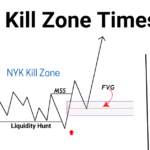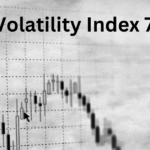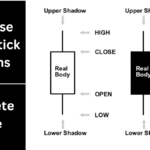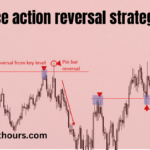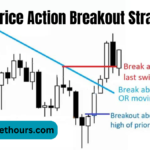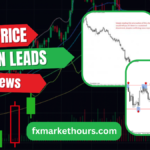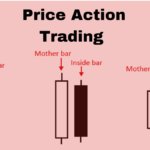In the world of trading, synthetic indices have become increasingly popular, offering traders an alternative to traditional financial markets. If you’re new to this concept or curious about how synthetic indices work, this guide will help you understand the basics, the differences from traditional indices, and why they are becoming a preferred choice for many traders.
What are Synthetic Indices
Synthetic indices are a type of financial instrument designed to mimic the behavior of real-world assets but with a twist: they are not tied to actual markets or economic events. These indices are generated using a random number generator and are typically offered by brokers like Deriv.
They provide consistent volatility and are available to trade 24/7, making them ideal for traders who want continuous market exposure without the risks associated with real-world economic changes.
Key Features of Synthetic Indices:
- Consistency: Synthetic indices are unaffected by global events like political instability or economic crises.
- 24/7 Availability: Unlike traditional indices, they can be traded any time, providing more flexibility for traders.
- Fair and Transparent: Since synthetic indices are computer-generated, they offer a fair and transparent trading environment.
How Synthetic Indices Work
Synthetic indices are based on mathematical models designed to replicate market behaviors. The movement in these indices is influenced by built-in volatility settings, making them an attractive option for traders who rely on technical analysis and price action.
What Are Some Examples of Synthetic Indices?
- Volatility Indices (e.g., Volatility 75 Index): These indices simulate varying levels of volatility, from low to extremely high, offering opportunities for different trading strategies.
- Boom and Crash Indices: These mimic the behavior of sudden price spikes (boom) or drops (crash) at specific intervals, offering both high-risk and high-reward scenarios.
- Jump Indices: Known for mimicking quick, unpredictable price movements, ideal for traders who thrive in volatile markets.

Synthetic vs. Traditional Indices
Unlike traditional indices like the S&P 500 or Dow Jones, which reflect the performance of a basket of stocks, synthetic indices are purely virtual. This allows traders to avoid some of the risks associated with traditional market indices, such as:
- Market Sentiment and News: Traditional indices are highly reactive to global events, corporate earnings, and economic data. Synthetic indices, on the other hand, are immune to such factors.
- Liquidity and Market Hours: Traditional indices only operate during specific market hours, while synthetic indices can be traded around the clock, giving traders more opportunities to capitalize on price movements.
| Feature | Synthetic Indices | Traditional Indices |
|---|---|---|
| Availability | 24/7 Trading | Market Hours Limited to Exchange Time |
| Influenced by Global Events | No | Yes |
| Volatility Control | Predefined Volatility | Market-Driven |
| Price Manipulation Risk | Minimal | Can Be Subject to Market Sentiment |
Benefits and Risks of Trading Synthetic Indices
As with any trading instrument, synthetic indices come with their own set of benefits and risks. Understanding these is crucial for making informed trading decisions.
Benefits:
- Uninterrupted Trading: 24/7 availability allows for constant opportunities, no matter the time of day or global market conditions.
- Controlled Volatility: With synthetic indices, you can choose the level of volatility you’re comfortable with, allowing for more tailored risk management.
- Transparency and Fairness: Since they are generated using algorithms, synthetic indices offer a level of transparency and fairness that is not always present in traditional markets.
Risks:
- Leverage and High Volatility: While leverage can amplify gains, it also increases the risk of significant losses, especially in highly volatile markets like synthetic indices.
- Over-trading: Due to their constant availability, traders might be tempted to trade excessively, increasing the potential for errors or emotional decisions.
- Dependence on Technical Analysis: Since these indices are purely technical, relying heavily on price action and technical analysis is essential for success.
Getting Started with Synthetic Indices
If you’re ready to start trading synthetic indices, here are a few steps to get started:
- Choose a Broker: Popular brokers like Deriv offer synthetic indices. Ensure your broker provides access to the type of synthetic index you want to trade.
- Understand the Volatility: Study the volatility levels of different synthetic indices. For instance, Volatility 75 is much more volatile than Boom 500, so choose accordingly.
- Develop a Strategy: Since synthetic indices are purely technical, having a solid strategy based on technical analysis is essential.
- Practice with a Demo Account: Most brokers provide demo accounts where you can practice trading synthetic indices before committing real capital.
Conclusion
Synthetic indices offer a unique, flexible trading opportunity for those looking to engage in a market that operates independently of traditional financial systems. With constant availability, controlled volatility, and minimal external influences, they provide a reliable option for traders of all experience levels. However, as with any trading instrument, understanding the risks and developing a strong strategy is crucial to success.
By mastering the characteristics of synthetic indices and incorporating risk management techniques, you can capitalize on the opportunities they present and potentially enhance your trading portfolio.

